- Release Notes and Announcements
- User Guide
- Product Introduction
- Purchase Guide
- Getting Started
- User Guide
- Quota Management
- Managing Functions
- Web Function Management
- Log Management
- Concurrence Management
- Trigger Management
- Version Management
- Alias Management
- Permission Management
- Managing Monitors and Alarms
- Network Configuration
- Layer Management
- Execution Configuration
- Extended Storage Management
- DNS Caching Configuration
- Triggers
- Development Guide
- Developer Tools
- Code Development
- Web Framework Development
- Deploying Framework on Command Line
- Quickly Deploying Egg Framework
- Quickly Deploying Express Framework
- Quickly Deploying Flask Framework
- Quickly Deploying Koa Framework
- Quickly Deploying Laravel Framework
- Quickly Deploying Nest.js Framework
- Quickly Deploying Next.js Framework
- Quickly Deploying Nuxt.js Framework
- Quickly Deploying Django Framework
- Best Practice
- Overview
- Solutions with Tencent Cloud Services
- Business Development
- ServerlessFramework Practices
- API Gateway
- TRTC Practices
- COS Practices
- CKafka Practice
- CLS
- CLB Practice
- MPS
- CDN
- CDWPG
- VOD
- SMS
- ES
- Scheduled Task
- Video Processing
- Success Stories
- API Documentation
- History
- Introduction
- API Category
- Making API Requests
- Trigger APIs
- Function APIs
- Invoke
- UpdateFunctionConfiguration
- UpdateFunctionCode
- ListFunctions
- GetFunctionLogs
- GetFunction
- DeleteFunction
- CreateFunction
- CopyFunction
- PublishVersion
- ListVersionByFunction
- GetFunctionAddress
- DeleteAlias
- UpdateAlias
- ListAliases
- GetAlias
- CreateAlias
- PutTotalConcurrencyConfig
- PutReservedConcurrencyConfig
- PutProvisionedConcurrencyConfig
- GetReservedConcurrencyConfig
- GetProvisionedConcurrencyConfig
- DeleteReservedConcurrencyConfig
- DeleteProvisionedConcurrencyConfig
- UpdateFunctionEventInvokeConfig
- GetFunctionEventInvokeConfig
- InvokeFunction
- GetRequestStatus
- Namespace APIs
- Layer Management APIs
- Async Event Management APIs
- Other APIs
- Data Types
- Error Codes
- Function and Layer Status Description
- SDK Documentation
- FAQs
- Related Agreement
- Contact Us
- Glossary
- Release Notes and Announcements
- User Guide
- Product Introduction
- Purchase Guide
- Getting Started
- User Guide
- Quota Management
- Managing Functions
- Web Function Management
- Log Management
- Concurrence Management
- Trigger Management
- Version Management
- Alias Management
- Permission Management
- Managing Monitors and Alarms
- Network Configuration
- Layer Management
- Execution Configuration
- Extended Storage Management
- DNS Caching Configuration
- Triggers
- Development Guide
- Developer Tools
- Code Development
- Web Framework Development
- Deploying Framework on Command Line
- Quickly Deploying Egg Framework
- Quickly Deploying Express Framework
- Quickly Deploying Flask Framework
- Quickly Deploying Koa Framework
- Quickly Deploying Laravel Framework
- Quickly Deploying Nest.js Framework
- Quickly Deploying Next.js Framework
- Quickly Deploying Nuxt.js Framework
- Quickly Deploying Django Framework
- Best Practice
- Overview
- Solutions with Tencent Cloud Services
- Business Development
- ServerlessFramework Practices
- API Gateway
- TRTC Practices
- COS Practices
- CKafka Practice
- CLS
- CLB Practice
- MPS
- CDN
- CDWPG
- VOD
- SMS
- ES
- Scheduled Task
- Video Processing
- Success Stories
- API Documentation
- History
- Introduction
- API Category
- Making API Requests
- Trigger APIs
- Function APIs
- Invoke
- UpdateFunctionConfiguration
- UpdateFunctionCode
- ListFunctions
- GetFunctionLogs
- GetFunction
- DeleteFunction
- CreateFunction
- CopyFunction
- PublishVersion
- ListVersionByFunction
- GetFunctionAddress
- DeleteAlias
- UpdateAlias
- ListAliases
- GetAlias
- CreateAlias
- PutTotalConcurrencyConfig
- PutReservedConcurrencyConfig
- PutProvisionedConcurrencyConfig
- GetReservedConcurrencyConfig
- GetProvisionedConcurrencyConfig
- DeleteReservedConcurrencyConfig
- DeleteProvisionedConcurrencyConfig
- UpdateFunctionEventInvokeConfig
- GetFunctionEventInvokeConfig
- InvokeFunction
- GetRequestStatus
- Namespace APIs
- Layer Management APIs
- Async Event Management APIs
- Other APIs
- Data Types
- Error Codes
- Function and Layer Status Description
- SDK Documentation
- FAQs
- Related Agreement
- Contact Us
- Glossary
Overview
As agile development and DevOps get more popular, CI/CD has become an indispensable best practice by almost all developers. It aims to deliver practical software programs more quickly.
CI/CD
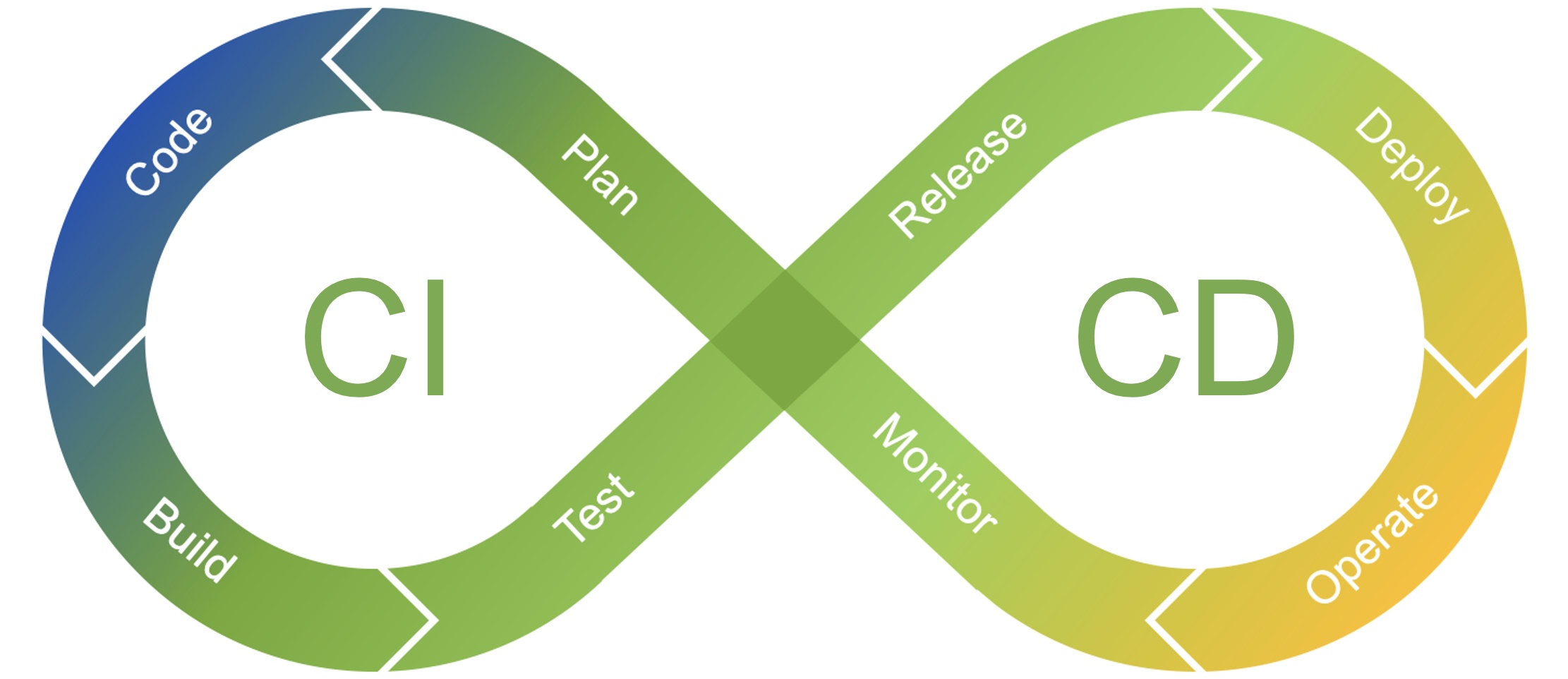
CI/CD strengths
- Reduced release cycle
- Reduced risks
- Improved code quality
- More efficient feedback loop
- Visual process
This document uses GitHub, Jenkins, and CODING as examples to describe how to use Serverless Framework CLI to quick build CI/CD for your SCF project.
Automated Deployment Based on GitHub
GitHub Actions is an automated software development workflow launched by GitHub. It uses actions to execute any tasks, including CI/CD.
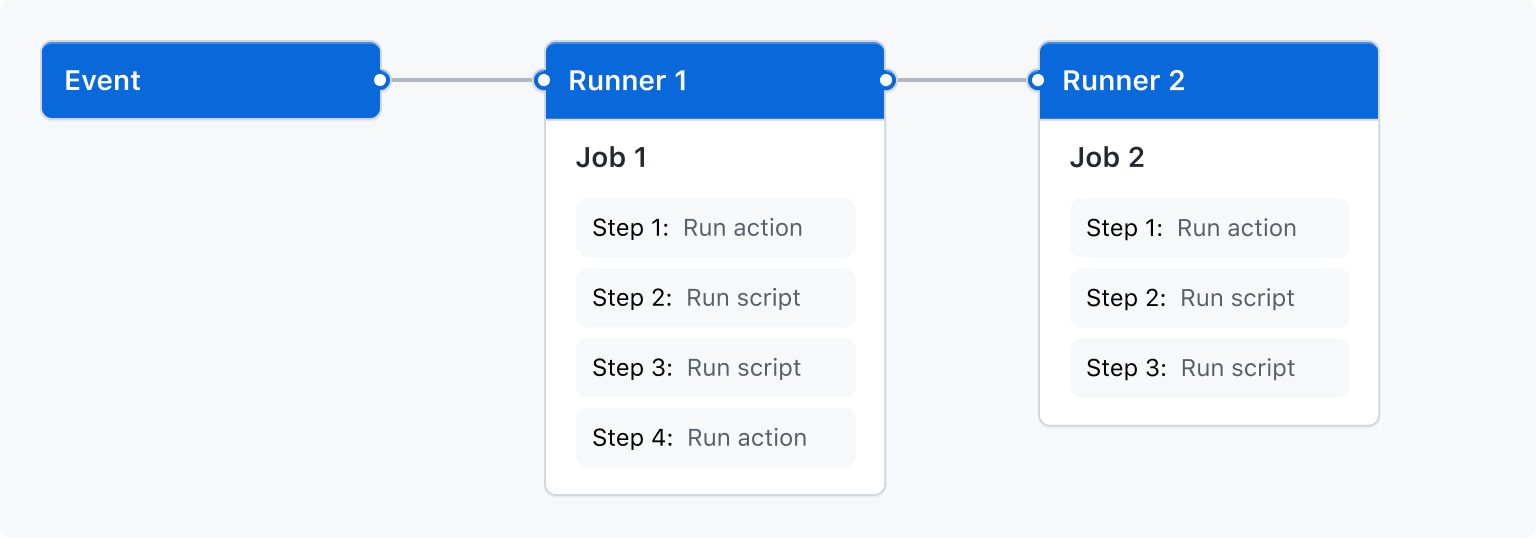
Prerequisites
- The SCF project has been hosted in GitHub.
- The project needs to contain the
serverless.ymlconfiguration file used for execution in Serverless Framework CLI. - To use an HTTP-triggered function, place the scf_bootstrap file in the root directory of your project.
Directions
Note:SCF has released Tencent Serverless Action in GitHub.
- Search for Tencent Serveless Action in GitHub.
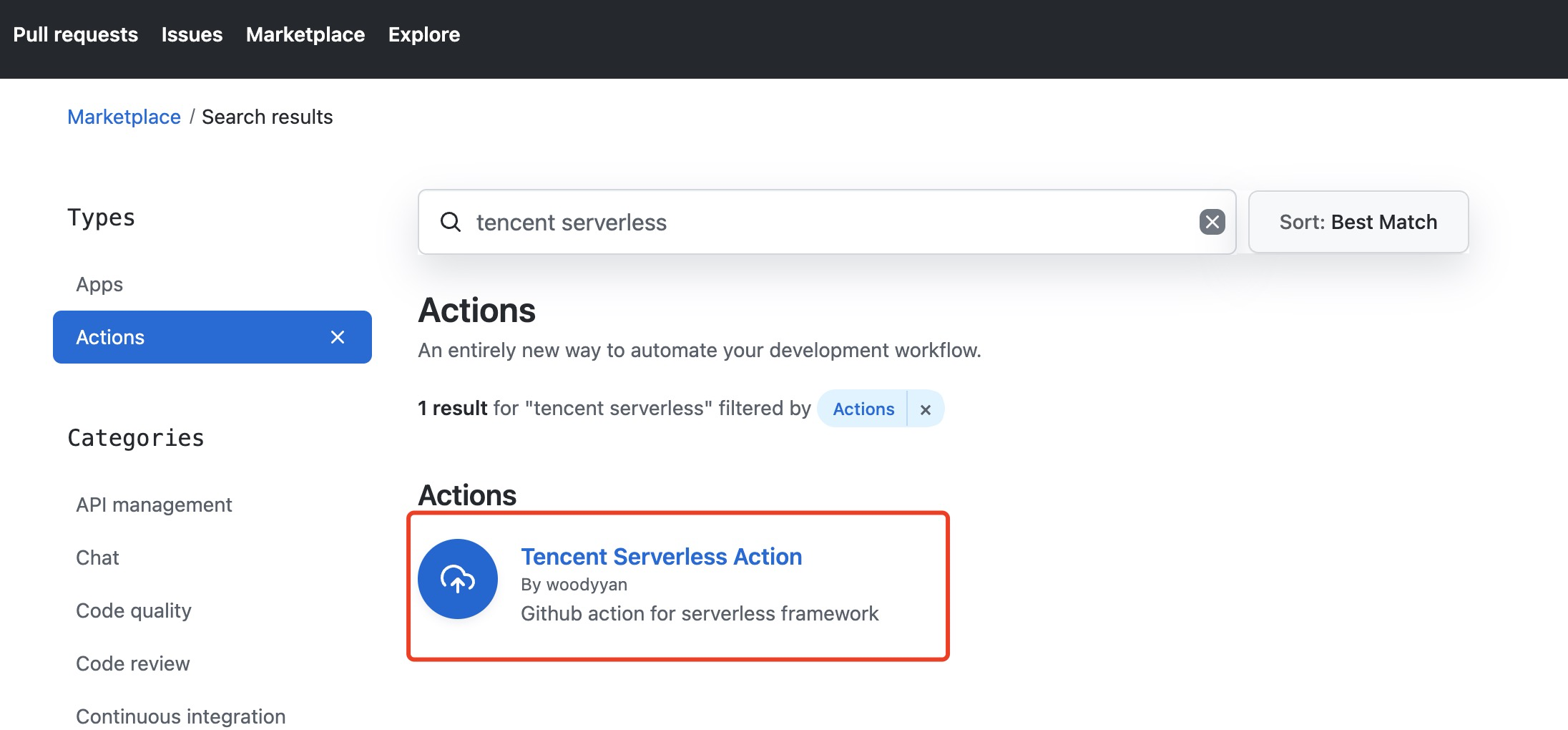
- On the Actions tab, select Set up a workflow yourself as shown below.
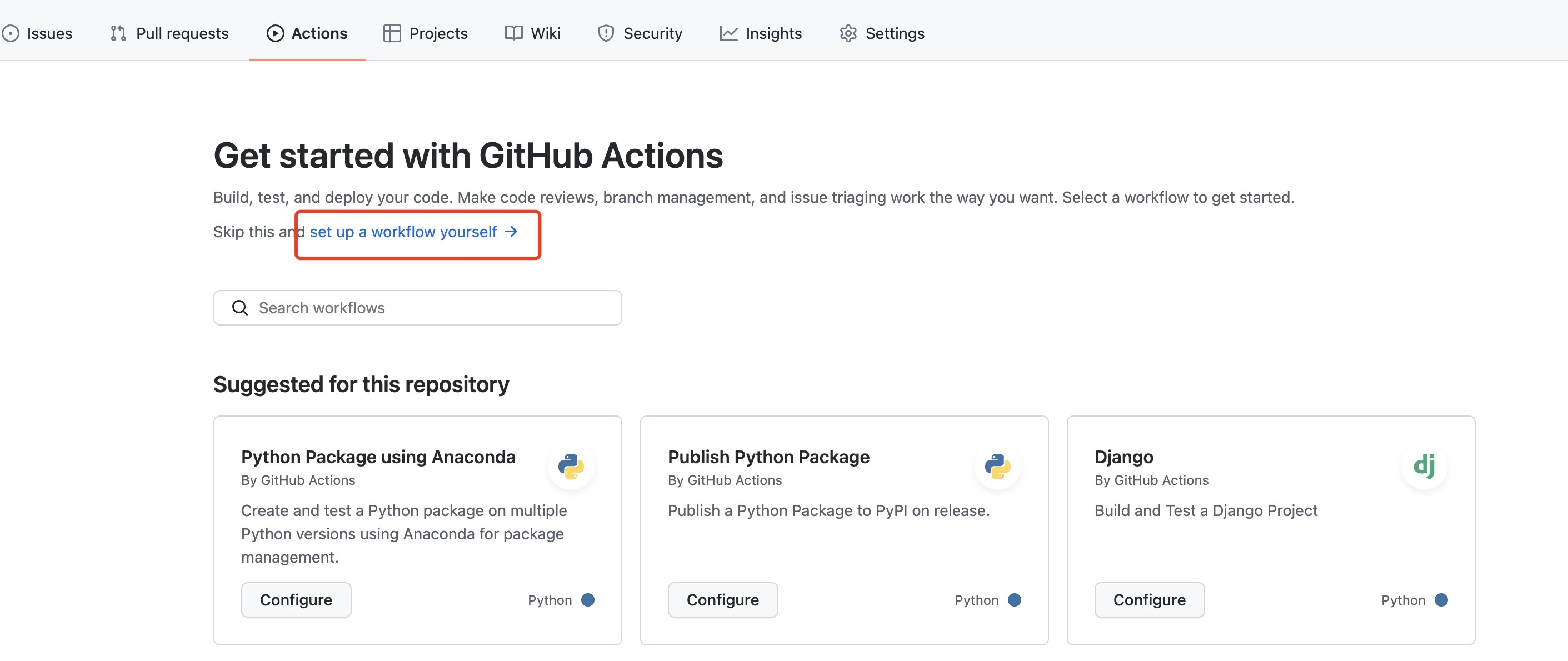
- How to use:
If you are familiar with the action usage, you can use the following command, which encapsulates the steps of installing Serverless Framework and running the deployment command.
- name: serverless scf deploy uses: woodyyan/tencent-serverless-action@mainIf you are new to actions, you can select one of the following YML code samples based on your programming language (Python, Java, or Node.js):
# When the code is pushed to the `main` branch, the current workflow will be executed # For more information on configuration, visit https://docs.github.com/cn/actions/getting-started-with-github-actions. name: deploy serverless scf on: # Configuration of the event and branch listened on push: branches: - main jobs: deploy: name: deploy serverless scf runs-on: ubuntu-latest steps: - name: clone local repository uses: actions/checkout@v2 - name: deploy serverless uses: woodyyan/tencent-serverless-action@main env: # Environment variable STAGE: dev # Your deployment environment SERVERLESS_PLATFORM_VENDOR: tencent # The serverless platform is `aws` by default outside the Chinese mainland. Here, it is set to `tencent` TENCENT_SECRET_ID: ${{ secrets.TENCENT_SECRET_ID }} # `secret ID` of your Tencent Cloud account, which needs to be configured in `Settings-Secrets` TENCENT_SECRET_KEY: ${{ secrets.TENCENT_SECRET_KEY }} # `secret key` of your Tencent Cloud account, which needs to be configured in `Settings-Secrets`TENCENT_SECRET_IDandTENCENT_SECRET_KEYare required during the deployment. You need to configure such variables inSecretsin the GitHub code repository settings as follows: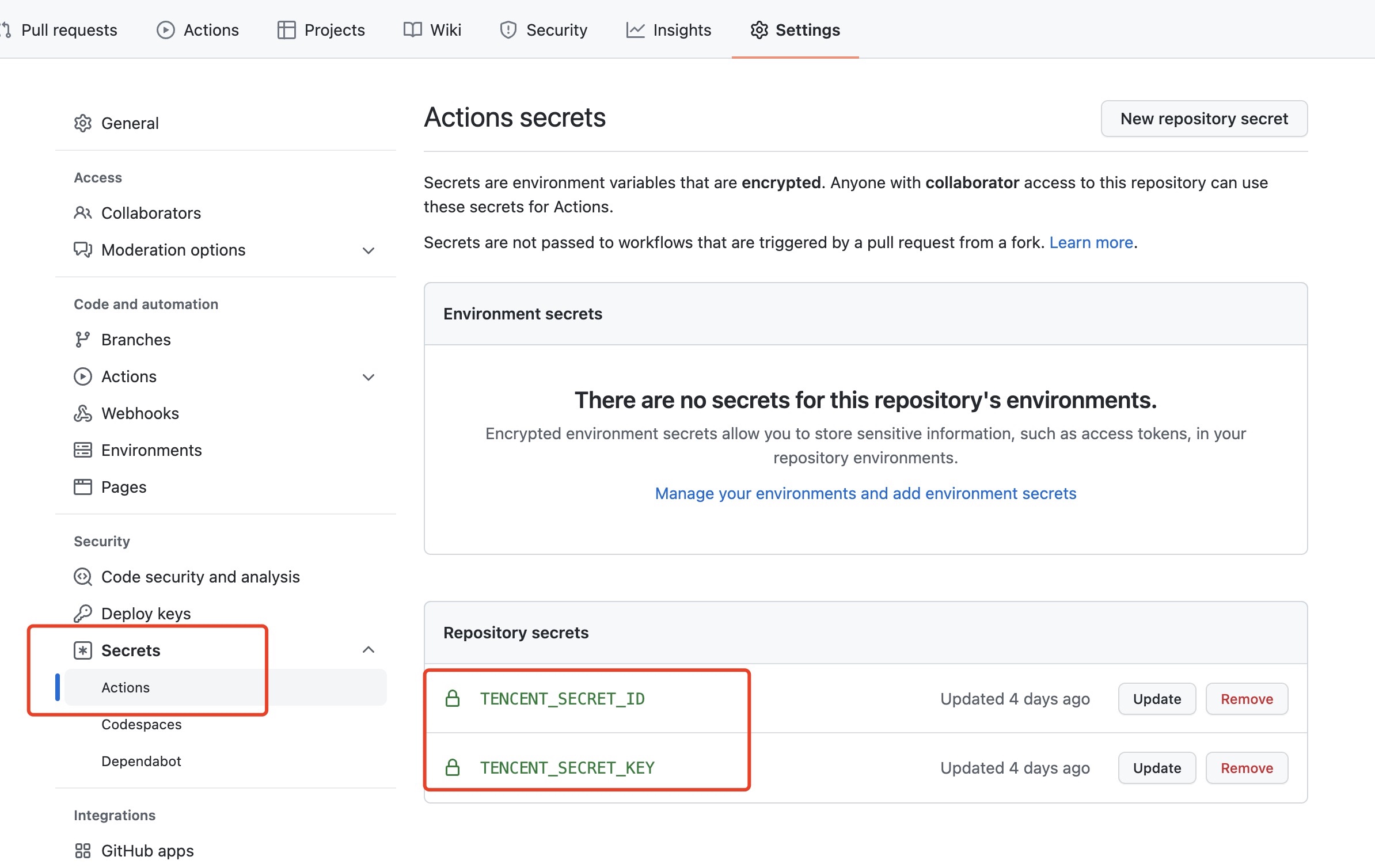
You can get the Tencent Cloud secret ID and key from CAM.
- After the configuration, every time the code is pushed, the deployment process will be automatically triggered, and you can view the execution result and error logs on the Actions tab in real time as shown below:
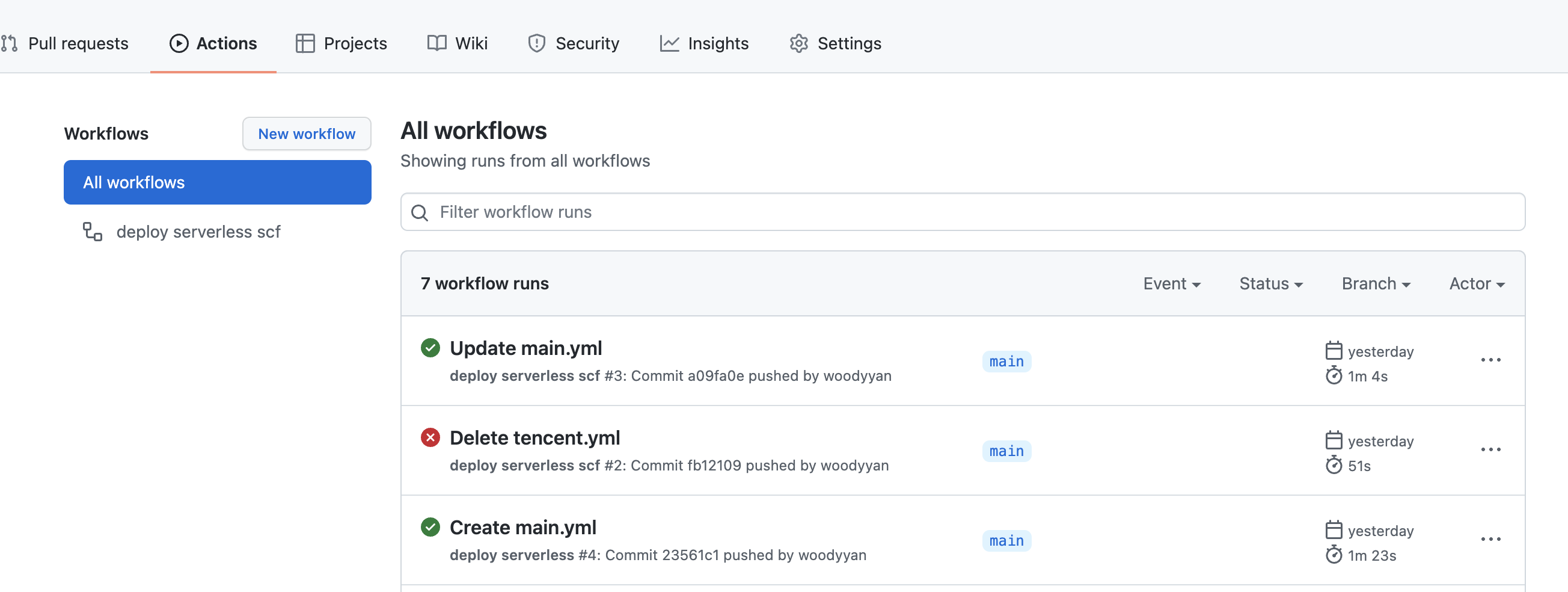
In addition, you can add testing to the process for steps such as security check and release based on your project needs.
Automated Deployment Based on Jenkinsfile
Jenkinsfile is commonly used on Jenkins and CODING platforms. After configuring the Jenkinsfile, you can complete automated deployment on such platforms.
Prerequisites
- You have hosted your SCF project onto platforms such as CODING, GitHub, GitLab, and Gitee.
- The project needs to contain the
serverless.ymlconfiguration file used for execution in Serverless Framework CLI. - To use an HTTP-triggered function, place the
scf_bootstrapfile in the root directory of your project.
Directions
This document provides Jenkinsfile code in three programming languages: Python, Java, and Node.js. Carefully read the comments.
pipeline {
agent any
stages {
stage('check out') {
steps {
checkout([$class: 'GitSCM', branches: [[name: env.GIT_BUILD_REF]],
userRemoteConfigs: [[url: env.GIT_REPO_URL, credentialsId: env.CREDENTIALS_ID]]])
}
}
stage('Package'){ // This stage is only used for a Java project
steps{
container("maven") {
echo 'Package start'
sh "mvn package" // This line is used for a Java Maven project
sh "./gradlew build" // This line is used for a Java Gradle project
sh "mkdir zip" // This line is used to store JAR and `scf_bootstrap` files for HTTP-triggered Java functions. You only need to specify the `Jar` directory in `Serverless.yml` for event-triggered Java functions.
sh "cp ./build/libs/XXX.jar ./scf_bootstrap ./zip" // This line is used to move JAR and `scf_bootstrap` files for HTTP-triggered Java functions. You only need to specify the `Jar` directory in `Serverless.yml` for event-triggered Java functions. Note that if you use Maven for compilation, you need to change the JAR path below to `/target`.
}
}
}
stage('Install dependency') {
steps {
echo 'Installing dependency...'
sh 'npm i -g serverless'
sh 'npm install' // This line is used for a Node.js project
echo 'Dependency installed.'
}
}
stage('deploy') {
steps {
echo 'deploying...'
withCredentials([
cloudApi(
credentialsId: "${env.TENCENT_CLOUD_API_CRED}",
secretIdVariable: 'TENCENT_SECRET_ID',
secretKeyVariable: 'TENCENT_SECRET_KEY'
),
]) {
// Generate the credential file
sh 'echo "TENCENT_SECRET_ID=${TENCENT_SECRET_ID}\nTENCENT_SECRET_KEY=${TENCENT_SECRET_KEY}" > .env'
// Deploy
sh 'sls deploy --debug'
// Remove the credential
sh 'rm .env'
}
echo 'deployment complete'
}
}
}
}
You can use the above Jenkinsfile to quickly configure CI/CD on platforms such as Jenkins and CODING.
Note:You can get Tencent Cloud
TENCENT_SECRET_IDandTENCENT_SECRET_KEYrequired during the deployment from CAM.

 Yes
Yes
 No
No
Was this page helpful?